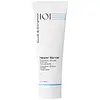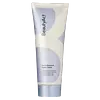What's inside
What's inside
 Key Ingredients
Key Ingredients

 Benefits
Benefits

 Concerns
Concerns

 Ingredients Side-by-side
Ingredients Side-by-side

Water
Skin ConditioningSqualane
EmollientGlycerin
HumectantDicaprylyl Carbonate
EmollientJojoba Oil/Macadamia Seed Oil Esters
Skin ConditioningPolyglyceryl-3 Methylglucose Distearate
EmulsifyingButylene Glycol
HumectantCetearyl Alcohol
EmollientHydroxyethyl Acrylate/Sodium Acryloyldimethyl Taurate Copolymer
Emulsion StabilisingSimmondsia Chinensis Seed Oil
EmollientSaccharide Isomerate
HumectantCamellia Sinensis Leaf Extract
AntimicrobialBisabolol
MaskingAllantoin
Skin ConditioningCeramide Ng
Skin ConditioningSqualene
EmollientPhytosteryl Macadamiate
Skin ConditioningPhytosterols
Skin ConditioningTocopherol
AntioxidantTocopheryl Acetate
AntioxidantCitric Acid
BufferingSodium Citrate
BufferingEthylhexylglycerin
Skin ConditioningPhenoxyethanol
PreservativeWater, Squalane, Glycerin, Dicaprylyl Carbonate, Jojoba Oil/Macadamia Seed Oil Esters, Polyglyceryl-3 Methylglucose Distearate, Butylene Glycol, Cetearyl Alcohol, Hydroxyethyl Acrylate/Sodium Acryloyldimethyl Taurate Copolymer, Simmondsia Chinensis Seed Oil, Saccharide Isomerate, Camellia Sinensis Leaf Extract, Bisabolol, Allantoin, Ceramide Ng, Squalene, Phytosteryl Macadamiate, Phytosterols, Tocopherol, Tocopheryl Acetate, Citric Acid, Sodium Citrate, Ethylhexylglycerin, Phenoxyethanol
Water
Skin ConditioningCaprylic/Capric Triglyceride
MaskingIsopropyl Palmitate
EmollientGlycerin
HumectantBis-Diglyceryl Polyacyladipate-2
EmollientHydrogenated Rapeseed Oil
EmollientGlyceryl Oleate
EmollientPolyglyceryl-3 Polyricinoleate
EmulsifyingHydrogenated Palm Oil
EmollientCalcium PCA
HumectantPropanediol
SolventDimethicone
EmollientButyrospermum Parkii Butter
Skin ConditioningPhenoxyethanol
PreservativeCandelilla Cera
EmollientSodium Lauroyl Lactylate
EmulsifyingTocopheryl Acetate
AntioxidantEthylhexylglycerin
Skin ConditioningSodium Polyglutamate
HumectantOlea Europaea Oil Unsaponifiables
Skin ConditioningCeramide NP
Skin ConditioningPentylene Glycol
Skin ConditioningCeramide AP
Skin ConditioningPhytosphingosine
Skin ConditioningXanthan Gum
EmulsifyingCholesterol
EmollientCarbomer
Emulsion StabilisingPhospholipids
Skin ConditioningSphingolipids
EmollientSodium Citrate
BufferingP-Anisic Acid
MaskingCeramide EOP
Skin ConditioningCitric Acid
BufferingTocopherol
AntioxidantWater, Caprylic/Capric Triglyceride, Isopropyl Palmitate, Glycerin, Bis-Diglyceryl Polyacyladipate-2, Hydrogenated Rapeseed Oil, Glyceryl Oleate, Polyglyceryl-3 Polyricinoleate, Hydrogenated Palm Oil, Calcium PCA, Propanediol, Dimethicone, Butyrospermum Parkii Butter, Phenoxyethanol, Candelilla Cera, Sodium Lauroyl Lactylate, Tocopheryl Acetate, Ethylhexylglycerin, Sodium Polyglutamate, Olea Europaea Oil Unsaponifiables, Ceramide NP, Pentylene Glycol, Ceramide AP, Phytosphingosine, Xanthan Gum, Cholesterol, Carbomer, Phospholipids, Sphingolipids, Sodium Citrate, P-Anisic Acid, Ceramide EOP, Citric Acid, Tocopherol
 Reviews
Reviews

Ingredients Explained
These ingredients are found in both products.
Ingredients higher up in an ingredient list are typically present in a larger amount.
Citric Acid is an alpha hydroxy acid (AHA) naturally found in citrus fruits like oranges, lemons, and limes.
Like other AHAs, citric acid can exfoliate skin by breaking down the bonds that hold dead skin cells together. This helps reveal smoother and brighter skin underneath.
However, this exfoliating effect only happens at high concentrations (20%) which can be hard to find in cosmetic products.
Due to this, citric acid is usually included in small amounts as a pH adjuster. This helps keep products slightly more acidic and compatible with skin's natural pH.
In skincare formulas, citric acid can:
While it can provide some skin benefits, research shows lactic acid and glycolic acid are generally more effective and less irritating exfoliants.
Most citric acid used in skincare today is made by fermenting sugars (usually from molasses). This synthetic version is identical to the natural citrus form but easier to stabilize and use in formulations.
Read more about some other popular AHA's here:
Learn more about Citric AcidEthylhexylglycerin (we can't pronounce this either) is commonly used as a preservative and skin softener. It is derived from glyceryl.
You might see Ethylhexylglycerin often paired with other preservatives such as phenoxyethanol. Ethylhexylglycerin has been found to increase the effectiveness of these other preservatives.
Glycerin is already naturally found in your skin. It helps moisturize and protect your skin.
A study from 2016 found glycerin to be more effective as a humectant than AHAs and hyaluronic acid.
As a humectant, it helps the skin stay hydrated by pulling moisture to your skin. The low molecular weight of glycerin allows it to pull moisture into the deeper layers of your skin.
Hydrated skin improves your skin barrier; Your skin barrier helps protect against irritants and bacteria.
Glycerin has also been found to have antimicrobial and antiviral properties. Due to these properties, glycerin is often used in wound and burn treatments.
In cosmetics, glycerin is usually derived from plants such as soybean or palm. However, it can also be sourced from animals, such as tallow or animal fat.
This ingredient is organic, colorless, odorless, and non-toxic.
Glycerin is the name for this ingredient in American English. British English uses Glycerol/Glycerine.
Learn more about GlycerinPhenoxyethanol is a preservative that has germicide, antimicrobial, and aromatic properties. Studies show that phenoxyethanol can prevent microbial growth. By itself, it has a scent that is similar to that of a rose.
It's often used in formulations along with Caprylyl Glycol to preserve the shelf life of products.
Sodium Citrate is the sodium salts of citric acid. In skincare, it is used to alter pH levels and acts as a preservative.
Its main functions are to maintain the pH of a product and neutralize metal ions.
The acidity of our skin is maintained by our glands and skin biome; normal pH level of skin is slightly acidic (~4.75-5.5).
Being slightly acidic allows our skin to create an "acid mantle". This acid mantle is a thin barrier that protects our skin from bacteria and contaminants.
Learn more about Sodium CitrateTocopherol (also known as Vitamin E) is a common antioxidant used to help protect the skin from free-radicals and strengthen the skin barrier. It's also fat soluble - this means our skin is great at absorbing it.
Vitamin E also helps keep your natural skin lipids healthy. Your lipid skin barrier naturally consists of lipids, ceramides, and fatty acids. Vitamin E offers extra protection for your skin’s lipid barrier, keeping your skin healthy and nourished.
Another benefit is a bit of UV protection. Vitamin E helps reduce the damage caused by UVB rays. (It should not replace your sunscreen). Combining it with Vitamin C can decrease sunburned cells and hyperpigmentation after UV exposure.
You might have noticed Vitamin E + C often paired together. This is because it is great at stabilizing Vitamin C. Using the two together helps increase the effectiveness of both ingredients.
There are often claims that Vitamin E can reduce/prevent scarring, but these claims haven't been confirmed by scientific research.
Learn more about TocopherolTocopheryl Acetate is AKA Vitamin E. It is an antioxidant and protects your skin from free radicals. Free radicals damage the skin by breaking down collagen.
One study found using Tocopheryl Acetate with Vitamin C decreased the number of sunburned cells.
Tocopheryl Acetate is commonly found in both skincare and dietary supplements.
Learn more about Tocopheryl AcetateWater. It's the most common cosmetic ingredient of all. You'll usually see it at the top of ingredient lists, meaning that it makes up the largest part of the product.
So why is it so popular? Water most often acts as a solvent - this means that it helps dissolve other ingredients into the formulation.
You'll also recognize water as that liquid we all need to stay alive. If you see this, drink a glass of water. Stay hydrated!
Learn more about Water